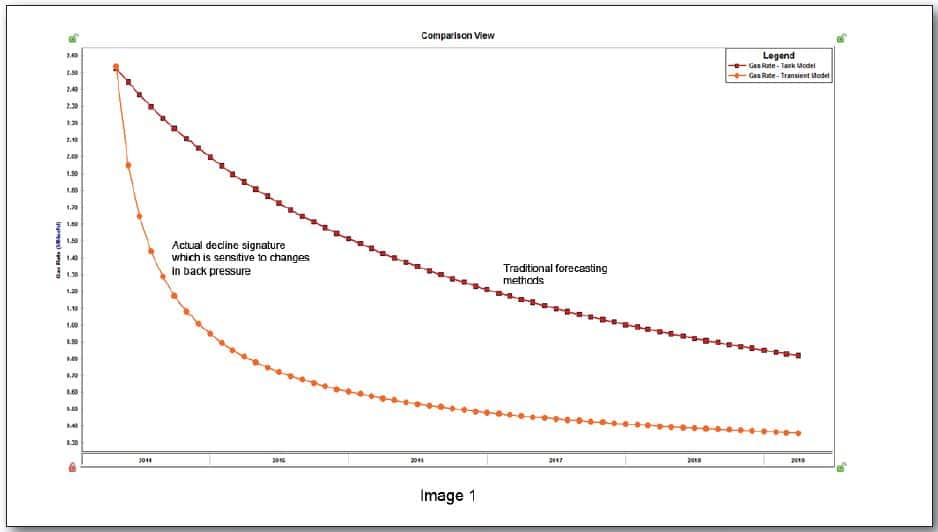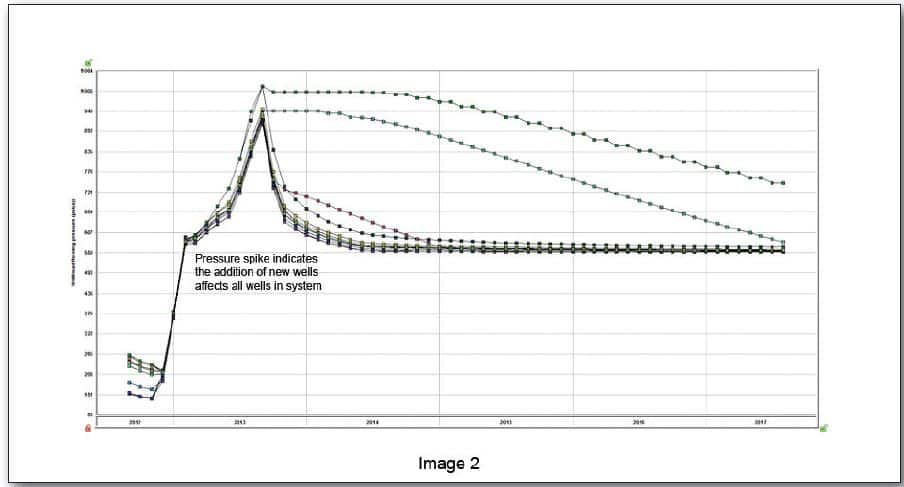Development & Planning in Unconventional Gas – Condensate Fields with IHS Piper
Exploration and production companies have come to a point where they are focusing more on the development of their unconventional properties. Engineers are faced with the task of minimizing production back-out of existing wells while also developing large gathering systems economically. This article highlights the tools that are available in IHS Piper for the planning of required gathering system infrastructure in liquid rich, unconventional fields.
The first step to model creation is using the GIS interface. This interface has been designed to provide the flexibility of using a variety of data sources such as: shapefiles, geographic co-ordinates, image files and onscreen editing to quickly build the model infrastructure. This interface allows users to account for elevation changes, temperature changes, and phase changes within the surface network but also connects with our IHS RTA software to model the inflow behavior.
Inflow from these low permeability reservoirs shows a unique production signature that cannot be effectively modeled using traditional techniques. The connection to IHS RTA allows users to account for transient well behavior while accounting for geo-mechanical and desorption affects. This allows users to predict reasonable inflow behavior as depicted by Image 1.
Locations for new drills can easily be imported and scheduled. Once proposed development is forecasted, onscreen diagnostics allow for quick identification of field optimization potential. Image 2 shows how pressures have increased within the gathering system with the addition of new wells.
One of the benefits of including the inflow relationships is that back-out can be quantified. The bubble map in Image 3 not only highlights the areas of the field that are backed out but provides users with a potential uplift range for each well. The frictional pressure loss map, also shown in Image 3, highlights the pipeline bottlenecks and the area in which the user may want to take a closer look.
Other tools such as the nodal deliverability plots show the difference between lowering pressures using compression and lowering pressures by means of adding compression and reducing pressure losses (see Image 4).
With a shift in industry development of liquid rich fields, new features which allow users to model phase changes using the Peng-Robinson or Modified Wilson equations of state have been added to the IHS Piper software. These additions provide the ability to predict liquid drop-out throughout the system, which allows for better prediction of liquid hold-up and total liquid and gas phase production, shown in Image 5 are some properties of the detailed pipeline plot.
To complete the solution a pre-tax economics menu has also been added to the IHS Piper interface. Recent software upgrades also allow for easy same-screen map printing capability. Tools like the ones discussed in this article are critical in economically developing and optimizing a gathering system. The combined GIS interface, IHS RTA connection and diagnostics provide a robust solution for gathering system development.
Tara Bobocel, Technical Advisor, IHS
Posted 27 October 2015
This article was published by S&P Global Commodity Insights and not by S&P Global Ratings, which is a separately managed division of S&P Global.




